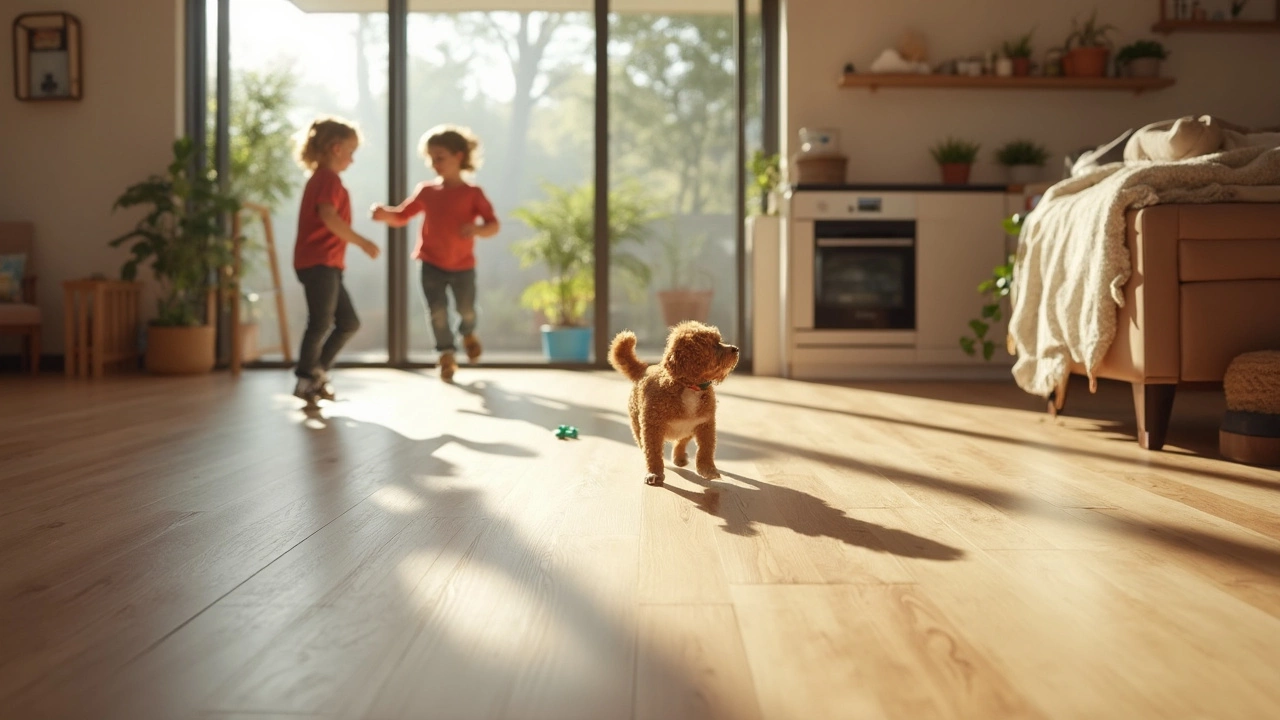Pet‑Friendly Floors: Choose the Right Surface for Your Pets
If you have a dog that loves to run or a cat that loves to scratch, the floor is the first thing that gets tested. You need a surface that can handle mud, claws and occasional accidents without looking worn out. Below are the key things to look for and the top flooring types that work well in pet households.
What Makes a Floor Pet‑Friendly?
First, durability matters. A good pet floor has a thick wear layer that can survive scratches and dents. Second, it should be water‑resistant or waterproof so spills and pet accidents are easy to wipe away. Third, the surface should feel comfortable under paws – no sharp edges or cold tiles that discourage your pet from being on the floor. Finally, easy maintenance is a must; a floor that can be swept, mopped or vacuumed quickly saves you time.
Best Flooring Choices for Your Furry Friends
Luxury Vinyl Plank (LVP) – LVP is water‑proof, has a tough wear layer and mimics the look of wood or stone. It’s soft enough for cats to lounge on and resistant to dog claws. A quick mop removes stains, and the click‑lock installation makes it a fast DIY project.
Engineered Hardwood with a high‑grade finish – If you love the warmth of wood, choose engineered boards with a 3‑mm or thicker polyurethane coating. The coating protects against scratches and moisture, while the core stays stable in changing humidity. Regular sweeping and occasional resealing keep it looking fresh.
Ceramic or Porcelain Tile – Tile is 100% waterproof and virtually scratch‑proof. It’s perfect for entryways or kitchens where pets track mud. The downside is it can be hard on pets’ joints, so add area rugs in living areas where they spend most of their time.
Rubber Flooring – Often used in gyms, rubber sheets are soft, slip‑resistant and absorb sound. They’re ideal for dog rooms, mudrooms or pet grooming spaces. Cleaning is as easy as wiping with a damp cloth.
Cork or Bamboo – Both are renewable, have natural insulation and feel warm under paws. Look for cork with a sealed surface to protect against water. They hide minor scratches better than hard wood and are easy to vacuum.
When picking a floor, think about your pet’s size and habits. Large breeds that dig or jump may need a thicker wear layer, while a cat that only scratches may be fine with a slightly softer surface. Keep nails trimmed and use entry mats to trap dirt before it reaches the main floor.
At First Choice Flooring Solutions we can help you compare samples, test durability and find the right price point. Our installers know how to fit each material without gaps that can collect dirt. Call us today and make your home both stylish and pet‑friendly.
Best Flooring That Doesn't Scratch: Real-Life Solutions
- Gavin Whitaker
- |
- |
- 0
Looking for flooring that stands up to scratches? Let's break down the real options that work in busy homes, especially if you’ve got kids, pets, or just hate seeing marks on your floors. We’ll compare different materials, spotlight which ones really hold up, and share some quick tricks to keep your floors looking sharp. No fluff—just what works and what doesn't. If you’re tired of constant repairs or nagging over shoes indoors, this guide’s for you.
View more